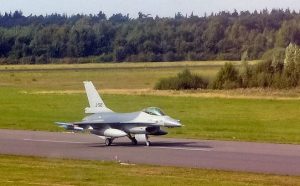8. Open Pedagogy
Chapter Subtopics
Openness in education brings potential for co-creation and learning through active participation in how knowledge is produced. Open pedagogy, open practices, and OER-enabled pedagogy are all about the teaching and learning practice and tools that empower teachers and learners to create and share knowledge openly and learn deeply.
Definitions
The open education movement is still discussing and debating what it means to think about teaching and learning practices in a more inclusive, diverse, and open manner. At least three major definitions have emerged from this discussion.
| Term | Definition | Source |
|---|---|---|
| Open Education Practices | Use, reuse, and creation of OER and collaborative, pedagogical practices employing social and participatory technologies for interaction, peer-learning, knowledge creation and sharing, and empowerment of learners | Cronin and MacLaren’s 2018 Open Edu Global presentation |
| Open Pedagogy | An access-oriented commitment to learner-driven education and a process of designing architectures and using tools for learning that enable learners to shape the public knowledge commons. You can find more resources at the Open Pedagogy Network | DeRosa & Jhangiani’s chapter in the 2017 Guide to Making Open Textbooks with Students |
| OER-enabled Pedagogy | The set of teaching and learning practices only possible or practical when you have permission to engage in the 5R activities. | Wiley, 2017 blog post |
Personal Reflection: Why It Matters to You
If you’ve used OER in the past, have you taken advantage of the permissions offered by their open licenses, or did you use OER just like you used your previous, traditionally copyrighted materials? In other words, did you do anything with the OER that was impossible to do with traditionally copyrighted materials? Why or why not?
Acquiring Essential Knowledge
It’s well established that people learn through activity. It’s equally well established that copyright restricts people from engaging in a range of activities. When juxtaposed like this, it becomes clear that copyright restricts pedagogy by contracting the universe of things learners and teachers can do with education materials. If there are things learners aren’t allowed to do, there are ways learners aren’t allowed to learn. If there are things teachers aren’t allowed to do, there are ways teachers aren’t allowed to teach.
You can learn about how this restriction on what teachers and learners can do impacts teaching and learning by reading this blog post about driving airplanes on roads.

OER-enabled pedagogy is the set of teaching and learning practices that are only possible or practical in the context of the 5R permissions that come with OER. OER-enabled pedagogy describes all the new ways that Creative Commons licenses allow learners to learn and all the new ways they allow teachers to teach.
Disposable and Renewable Assignments
Do you remember doing homework for school that felt utterly pointless? A “disposable assignment” is an assignment that supports an individual student’s learning but adds no other value to the world. The student spends hours working on it, the teacher spends time grading it, and the student gets it back and then recycles it. While disposable assignments may promote learning by an individual student, these assignments can be demoralizing for people who want to feel like their work matters beyond the immediate moment.
OER-enabled pedagogy can be used to create “renewable assignments” — assignments that both support individual student learning and add value to the broader world. With renewable assignments, learners are asked to create and openly license valuable artifacts that, in addition to supporting their own learning, will be useful to other learners both inside and outside the classroom. For example, classic renewable assignments include collaborating with learners to write new case studies for textbooks, create “explainer” videos, and modify learning materials to speak more directly to learners’ local cultures and needs.
Explore examples of OER-enabled pedagogy in action, including David Wiley and Robin DeRosa’s examples of learners adapting existing materials to create new textbooks. In both of these cases, teachers had learners create their own textbooks, which then had Creative Commons licenses applied to them. Other examples of OER-enabled pedagogy in action include Murray and Azzam’s assignments that had learners significantly improve articles on Wikipedia. When they completed these assignments, learners created open artifacts useful to both in supporting their own learning and the learning of other learners and educators. These examples of OER-enabled pedagogy have learners creating assignments that allow them to interact with the greater community and ensure that the assignments are renewable, not disposable artifacts.
A couple of other interesting examples of renewable assignments are a remixed explainer video that a student made about blogs vs. wikis, and the DS106 assignment bank, which is a hub for student created, CC-licensed content. Additional examples of open pedagogy are available on the Open Pedagogy website.
Final remarks
If you use your smartphone the same way you used a flip phone, getting a new phone served little point. Likewise, when we use OER to support learning in exactly the same ways we used old all rights reserved materials, we may save learners money but miss out on the transformative power of open. As you prepare to use OER in your teaching, think about new things that are possible in the context of permission to engage in the 5R activities.
License and Attribution
This chapter is adapted from Open Pedagogy and Practices by Mahrya Burnett, Jenay Solomon, Heather Healy, which is based on the Creative Commons' CC Certificate Resources, Chapter 5: Creative Commons For Educators, published under a Creative Commons Attribution 4.0 International License.

